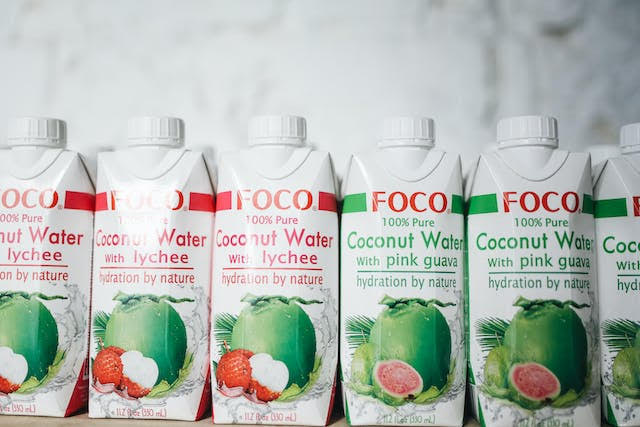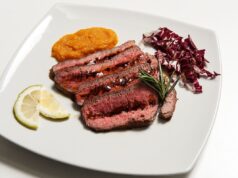Maintaining a balanced and nutritious diet becomes a challenge when you’re constantly on the move. The convenience of fast food and the scarcity of healthy options can derail your wellness goals. That is why healthy on-the-road meals are a lifeline for frequent travelers, daily commuters, and road trip enthusiasts. It’s all about making wise food choices despite the limited options and the confines of travel. These meals provide the energy and focus required for long periods on the road.
This article aims to shed light on the common difficulties faced when striving to eat healthy while traveling and offers practical solutions and tips to overcome them. Adopting healthy nutrition even on the road is about creating a sustainable habit that supports your health and well-being, regardless of where you are.
Planning Ahead: The Key to Success

Planning your meals and snacks before your departure ensures that you have various healthy options, reducing the temptation of fast food and unhealthy snacks. Here are some tips to help you research and prepare:
- Use online resources to find healthy eating spots along your route
- Check reviews and menus of restaurants in advance to identify healthier meal options
- Locate grocery stores near your stops for quick access to fresh produce and snack
- Download apps that specialize in locating healthy food options based on your location
In addition, packing a cooler filled with fresh fruits, vegetables, and other nutritious snacks is a fantastic strategy. It saves time and money but also provides a constant source of healthy choices right at your fingertips. Also, checking restaurant menus in advance can help you make better food choices.

Fast Food, Smart Choices
Sometimes, fast food restaurants are the only option available, especially during long road trips. In these instances, it’s still possible to make wise choices and have healthy on-the-road meals. Opt for grilled instead of fried options, and choose sides like salads or fruit cups over fries. Also, look for items rich in protein and fiber.
Here are some specific suggestions:
- Choose grilled chicken sandwiches or wraps
- Opt for salads with various vegetables and a lean protein source, but be mindful of high-calorie dressings
- Select smaller portion sizes or kid’s meals to keep calorie intake in check
- Drink water, unsweetened tea, or black coffee instead of sugary beverages
Packing a Healthy Picnic
For longer drives, going for a picnic is a great option, as it allows you to maintain control over your food choices, ensuring they are healthy and nutritious. Start by choosing easy-to-pack items such as whole grain sandwiches, fresh fruits, cut vegetables, nuts, and yogurt. Including diverse food groups ensures a balanced meal that keeps your energy levels steady throughout your trip. For protein, consider hard-boiled eggs, grilled chicken strips, or chickpea salads.
Of course, as recommended by nycministorage.com, always keep in mind that quality storage solutions preserve your food safe and fresh. Coolers and insulated bags will maintain the right temperature, especially for perishable items. Vacuum-sealed containers help preserve food freshness and save valuable space. Ensuring your cooler is well-packed and not over-stuffed will aid in maintaining a consistent temperature. Remember, the goal is to pack smart, ensuring your food remains fresh and delicious.

Staying Hydrated: A Vital Component
On extended trips, it is easy to neglect fluid intake. However, water is essential in various bodily functions, including temperature regulation, joint lubrication, and nutrient transportation. Dehydration, even in its mild form, can lead to fatigue, impaired concentration, and headaches.
Choose beverages wisely to ensure proper hydration. Opting for water over sugary drinks helps to maintain hydration without the added calories. Herbal teas and coconut water are also excellent alternatives. Carrying a reusable water bottle makes it convenient to drink water throughout your trip and aligns with environmentally friendly principles.
Listen to your body’s signals; don’t wait until you feel thirsty to drink water. Thirst is a late indicator of dehydration. Regular sips of water, especially in warmer climates or during physical activity, can help maintain hydration levels and enhance your overall well-being on the road.
Navigating Roadside Restaurants
Opting for grilled or steamed dishes instead of fried can significantly reduce calorie and fat intake. Don’t hesitate to explore local cuisine, as these dishes often incorporate fresh, regional ingredients and can offer a healthier alternative to chain restaurants. One practical tip is to ask to serve you dressings or sauces on the side. This small change allows you to control the amount used, helping to prevent consuming excess calories unnecessarily. Also, consider portion sizes, as roadside restaurants frequently serve generous amounts. Share dishes with travel companions or ask for a to-go box.
Tips for Special Dietary Needs
Traveling with allergies or specific dietary restrictions requires a bit of extra planning. Start by researching restaurant menus online or making a quick phone call to confirm that there are suitable options available.
When options are limited, consider packing your snacks or meals. It guarantees that you have something safe to eat, alleviates stress, and allows you to focus on enjoying your trip. Don’t forget to carry any necessary medication in case of an allergic reaction.

Leveraging Technology for Healthy On-the-Road Meals
Numerous apps and online resources are available to assist travelers in maintaining a healthy diet while on the road. These digital tools are instrumental in discovering nutritious options, helping you to stay on track with your health goals.
For example, utilize navigation apps such as Google Maps to locate nearby groceries or health food stores. Likewise, restaurant review websites like Yelp or TripAdvisor offer insights and reviews from other diners, helping you identify eateries that offer healthier menu options. These platforms often include menus and nutritional information, allowing for informed decision-making.
Conclusion
Maintaining a balanced and nutritious diet while traveling is crucial, and with the right strategies, it’s entirely achievable. By planning, making conscious food choices, and leveraging digital tools, you can ensure that you have healthy on-the-road meals. Whether you’re dealing with specific dietary needs or simply aiming to eat well while away from home, these tips can lead to a more enjoyable and health-conscious travel experience.




